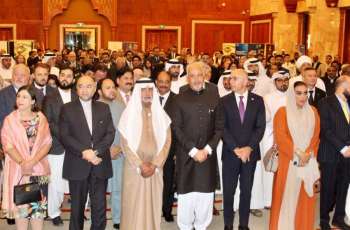MOSCOW (Pakistan Point News / Sputnik - 07th December, 2020) A Sputnik correspondent visited two memorials in the southeastern part of Moscow dedicated to the victims of the 1999 deadly terrorist attacks.
The southeastern districts of Moscow are not the most attractive part of the Russian capital due to lower incomes among their residents and poor environmental situation. In September 1999, this part of Moscow became infamous because of the terrible bombings of apartment blocks.
I have been living in southeastern Moscow since 1993, and the sound of second explosion reverberated even in my district. I remember the overwhelming horror that was felt by local residents, who organized patrols to check any suspicious activities near their houses.
The situation in Russia in summer-fall 1999 was very tense due to the increasing instability in the then-breakaway Chechen Republic, which was de-facto independent after the First Chechen War and turned into a hotbed of Islamist terrorism. On September 4, 1999, a huge explosion devastated a residential building, where families of Russian servicemen lived, in the city of Buynaksk, Republic of Dagestan, leaving 64 people dead. Unfortunately, it turned out to be a prelude to a series of such attacks.
Earlier in the morning on September 9, a terrible explosion occurred on the ground floor of a nine-story residential building number 19 on Guryanova Street, completely destroying one of the blocks in the building. The attack left 106 people dead and more than 600 injured.
Today, this is a very calm street and it is very difficult to imagine that it witnessed one of the most terrible tragedies in modern Russian history. The devastated building was demolished, and now one can see four 25-story buildings erected in its place.
In front of one of the new buildings, there is a small bronze monument erected here in 2020 in memory of the victims of the attack. Unlike the 9/11 monument in New York, it is small and is not dominating the city view.
On the opposite side of the street, a small but beautiful white-stone church was built in 2003. One can see the list of the victims in the church and pray for them.
Then-President Boris Yeltsin declared September 13 a mourning day to commemorate the victims of the explosion at the Guryanova Street, but on that day another blast fully destroyed the eight-story residential building number 6 on Kashirskoye Shosse, leaving 124 people dead and eight more injured.
The site of the second explosion does not look like the first one as Kashirskoye Shosse is a very busy street with multiple malls. The destroyed building was located in a densely populated area so there was not much space for building a big memorial.
Today, one can see a small garden on the place of the tragedy with a small bronze monument and a commemorative plaque with the list of the victims.
Both memorials are not imposing but they nevertheless leave the visitors with a deep feeling of sorrow.
The September 1999 series of bombings ended with the explosion near the residential building in Volgodonsk that took place three days later and killed 19 people.
The attacks caused many conspiracy theories, but in 2004, the Moscow City Court sentenced two perpetrators of the attacks � Yusuf Krymshamkhalov and Adam Dekkushev � to life imprisonment. Several other suspects have been killed in special counterterrorist operations in the Caucasus region, while the suspected main organizer of the attacks, Achemez Gochiyayev, still remains on the Russian and international wanted lists.
In 2002, southeastern Moscow faced an even more terrible terrorist attack: the Dubrovka theater hostage crisis, also known as the Nord-Ost siege that left some 130 people dead. Hopefully, this sad list will not be extended in the future.



